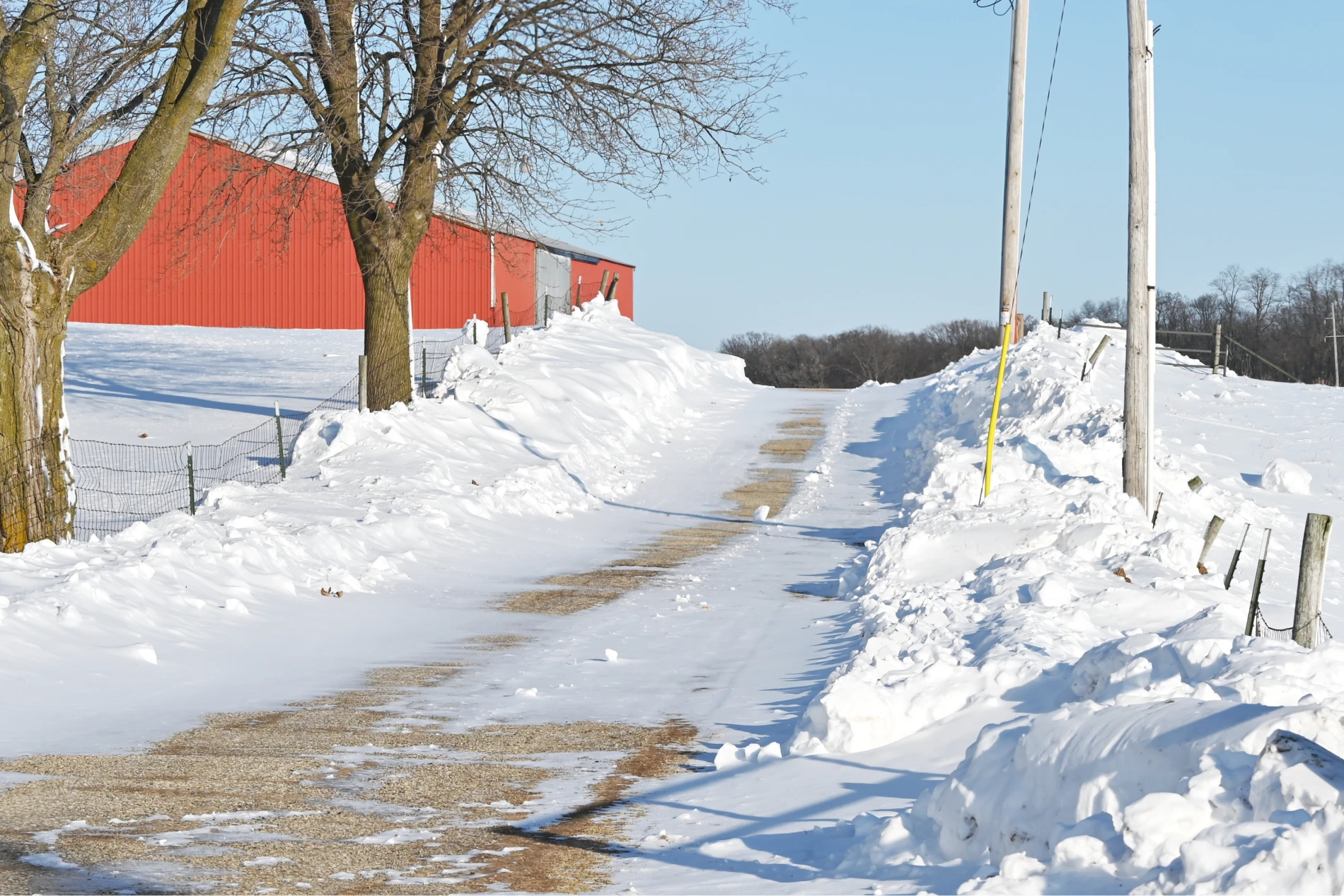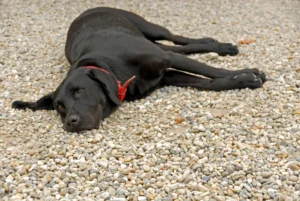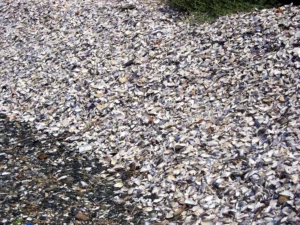The Snowpocalypse has come and gone, dumping anywhere from an inch to a foot on your gravel driveway. The snow and ice have melted, and even that gray sludgy stuff is off the shadier patches of your yard.
Now your gravel driveway is showing a little wear and tear after the storm. What to do?
Preparation will always be the best form of prevention. This means putting down rock salt or other ice-melting materials before the first flakes fall. We’ve shared our tips for what to do before and during a winter storm to keep your gravel where you put it.
But life happens. You can’t always get outside before a storm and put down salt, and sometimes storms are too aggressive for even the best salt jobs. Plus, some gravel will inevitably shift under the weight of snow and ice even with precautions taken.
Here are some methods to get your gravel driveway back to shipshape after Jack Frost has left town.
1. Rake it back into place. The gravel’s moved. Now what? Time to get out the rake! Snowplows and shoveling tend to push gravel outward, to the edges of the driveway. Using a rake, drag gravel back to the middle of the path. That leaves you prepared both for spring weather or more winter weather, depending on the forecast.
2. Make your gravel driveway higher than surrounding areas. The experts at Bray Topsoil and Gravel can help with this. Many washouts and ruts are the result of drainage issues. The solution? More gravel! Gravel creates a filtering layer to allow rainwater or melted snow more time to soak into the ground. A thicker layer of gravel gives the soil more time to absorb heavier precipitation. Making the gravel higher than the areas around it also allows some water to flow out the sides, rather than putting all the pressure into the ground below it.
3. Install a culvert or ditch to pull water away. Much like with making the gravel driveway taller than the area around it, installing a ditch to improve drainage will help undo any damage from the winter weather. Standing water is never good, but it’s especially challenging in driveways. The good news is, gravel driveways already put a dent in draining an area, so a ditch or culvert will only aid that further.
Want to learn more about maintaining your gravel driveway in any season? Check out The Pros and Cons of Installing and Maintaining a Gravel Driveway.
Planning to install a gravel driveway this spring?




